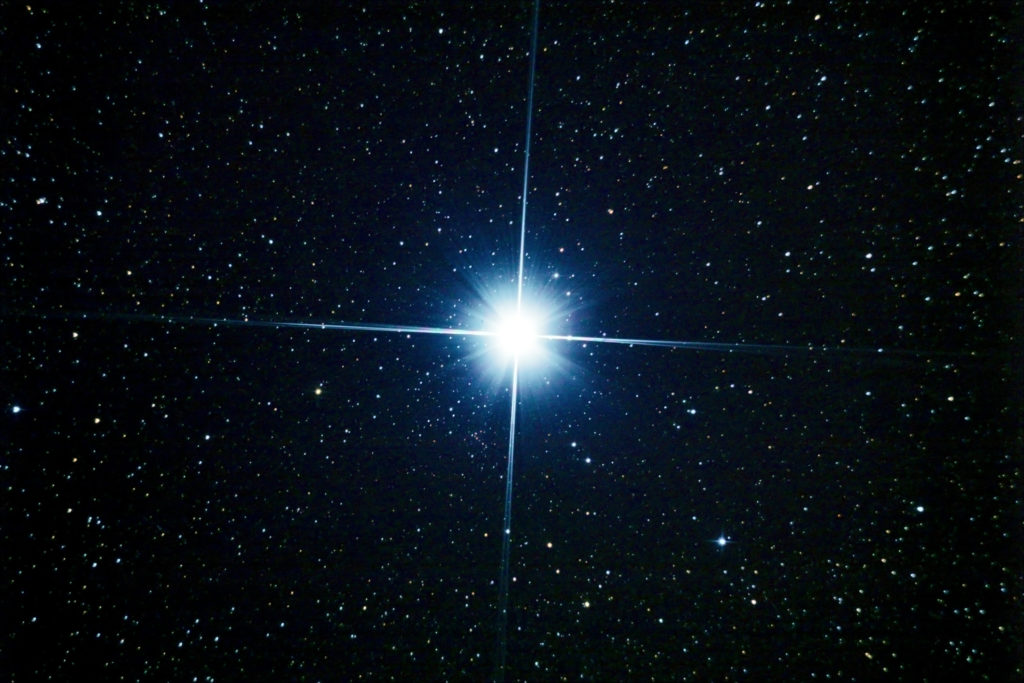The ancient Indian Civilization recorded some of the most masterful astronomy ever conceived. Known as the Yuga Cycles, it is a long-form calendar system that spans trillions of years.
The Yuga cycles mirror the Greek Great Year described by Plato. Today astronomers understand this period known as the precession of the equinoxes.
Precession is a 25 920 year cycle that measures the slow rotation of the background stars relative to rising sun on the vernal equinox. Originally described in the Vedas, the oldest known written texts on planet earth, the Yuga cycles describe this slow rotation of the zodiac constellations.
Each period describe ascending and descending periods of life on earth.
Today it’s most widely believed that we are in the Kali Yuga, but some Hindu scholars discuss whether this is true or not.
In this article we’ll get to know the foundations of the Yuga Cycles.
The Yugas and Long-Count Calendar
To understand the Yuga cycles, we must see that them as a measure of time.
Yogic astronomy divides the orbit of the Earth around the Sun into 27 segments, called nakshatras.
- Each nakshatra is further divided into four equal sectors called padas or steps. Multiply 4 by 27 and it equals 108.
- These 108 units mark the 108 steps that the Earth takes through space.
- Each nakshatra equals one half of the moon cycle around the Earth. The cycles within the human body respond and correspond to that.
The nakshatras describe in detail the motion of the earth, sun and moon.
The Yuga cycles are a way to divide the motion of the earth, sun, and other astronomical figures.
It’s based on the notion that the sun has a third motion as it revolves around its partner star somewhere in the cosmos.
Today binary star systems are known to be far more common than single star systems.
What are the 4 Yuga Cycles?
The Yugas are a cycle that spans over a period of roughly 25,920 years and is associated with the precession of the equinoxes, or the ‘Great Year’.
It is broken up into four eras known as “Yugas”. They each correspond to a period in relation to humanity’s level of perception of the non-material or spiritual universe.

Image: The Yuga Cycles are broken into Satya, Treta, Dwapara, and Kali Yugas.
Each of the four Yugas is assigned to specific amounts of time throughout the cycle. These are generally have the ratio of 4:3:2:1, with the smallest denomination of this ratio roughly 1296 years.
Today the lengths of each period is disputed, above is the most widely accepted version. However, we will explore the different interpretations in future articles.
As the entire cycle is roughly 25,920 years long, the Kali Yuga, or Iron Age, lasts for 2,592 years. The Satya Yuga or Golden Age has a longer length of 10,368 years.
When estimating these times we must take into account the elliptical orbit the sun makes with its supposed binary twin.
As it approaches its twin and encounters a greater gravitational pull, the sun behaves similar to a car approaching a sharp corner on a road.
Its velocity decreases as it makes a close orbit around its twin, before it is slingshot back out into space once more.
As it approaches, there would be such a gravitational pull on our sun that we would stay in that area of the universe for longer than we would be away from it.
Our sun would be drawn with such gravity towards its twin before being slung back out into space once more.
What are the 4 ‘Yugas’?
- Satya Yuga
- Treta Yuga
- Dwapara Yuga
- Kali Yuga
1) Satya Yuga or the Golden Age
The Golden Age marks the time of humanity’s purest era, where truth and love is valued over all else and balance reigns on the planet. It is believed that spiritual senses are at their peak too, with mankind’s ability to perceive the non-material at an all time high.
As humanity is currently in the depths of the Kali Yuga, we are the lowest point of the descending cycle, about to begin the long journey back up. It won’t be for roughly another 12,000 years, or half-cycle, that we will return to the top of the Satya Yuga or Golden Age.
2) Treta Yuga or the Silver Age
As we enter the third quarter of the Yuga cycle, humanity is thought to be able to comprehend the subtle energies at play throughout the universe. Things that seem unimaginable in modern times start to become perceived.
These include sensing natural electromagnetics and other subtle energies like electricity in the air, as well as refined awareness of seemingly paranormal phenomenon like synesthesia and telepathy.
3) Dwapara Yuga or Bronze Age
The second quarter of the cycle is linked to mental virtue. It is believed that, during this period, we will begin to comprehend spiritual ideas and begin adopting them worldwide.
4) Kali Yoga
The Kali Yuga is the fourth and present age of the world cycle of Yugas, or “ages.” It’s also the end of the four ages that comprise a cycle and is often referred to as the dark age. In Hindu belief, the Kali Yuga leads to destruction of the world and then the creation of a new cycle of the four yugas.
It is filled with war and conflict. Spiritually, civilization degenerates throughout the yuga, as people drift farther and farther from the Divine. At the end of the Kali Yuga, Hindus believe that Lord Shiva will come in the form of Lord Kalki to punish and cleanse the world, which will have devolved to the point of being incapable of enlightenment. The resulting transformation and re-creation of the universe is the start of a new cycle of yugas.
Which Yuga are we currently in?
In his 1894 book The Holy Science, Yukteswar Giri explains the link between the Yuga cycles and human behavior. Kali Yuga, or the Iron Age, is where we currently reside.
Being the first quarter, it is the lowest point in the cycle, and we are only just beginning the ascending stage. It is at this time that humanity can barely perceive anything outside gross materialism. In other words, it can’t get much worse than this!
The number of years the Yuga Cycle and Great Year takes to complete varies quite dramatically depending on which source you consult, but the most common number of 25,920 years has been adopted not only by modern researchers, but also by much of the ancient world.
This number was so important in fact, that many ancient cultures understood this phenomenon and based their systems of measurement on factors of the length of the Great Year, and included these precessional numbers in many ancient structures found all over the world.
From sites like Angkor Wat in Cambodia, all the way to the great Pyramid of Giza in Egypt, multiples of these numbers in some form appear again and again, highlighting the importance they held over civilizations from a bygone era.
Although it may appear to be an ancient idea, we still incorporate these numbers into modern day life. 60 second minutes, 60-minute hours, as well as 24-hour days, are all factors of the widely accepted Yuga Cycle length of 25,920.
While they are the same length, the Yuga Cycle is slightly different to the precession of the equinoxes or great year in that it measures eras of time in relation to humanity’s perception of the universe. As the cycle flows, there are ascending and descending periods of time that are thought to tie to mankind’s spiritual awareness.
Throughout the cycle, it is understood that the human race goes through times of greater connection with the spiritual world, as well as periods of time based on materialism and non-spirituality. As a result of this, there are certain stages of the Yuga Cycle that are thought to have physical effects on planet earth.
It is written by many ancient sources that this phenomenon is not something of science fiction, but the astronomical cycle of sun’s grand wider with its binary twin.
How Does the Yuga Cycle Work?
Imagine the heavens as a grand clock with certain constellations relating to numbers on that clock’s face. Throughout the Yuga Cycle, these constellations move throughout the sky, and depending on where they appear, they help us calculate the current point within the cycle.
The constellations are each represented by a sign of the zodiac, and depending on which sign is visible on sunrise on the autumnal equinox determines where we sit within the Great Year. As there are 12 signs of the zodiac, so too are there 12 months of the Great Year.
Because the cycle itself is so long, the slow movements of stars are barely perceptible to us. In fact, it takes roughly a human lifetime–72 years–for a star to move just one degree through the sky. Remember, it isn’t until a full 360 degrees has been completed that a Great Year or Yuga Cycle restarts.
To get an idea of perspective, you can try to measure this yourself. Next time there is a full moon and you are able to see it on a clear night, imagine it as being half a degree of the entire Yuga Cycle. Double its diameter and you are envisioning a full degree of the Cycle.
To understand this slow motion of the heavens would have required extreme patience and information acquired over thousands and thousands of years.
What Causes the Yuga Cycles?
As planet Earth moves throughout the cosmos, the Yuga Cycle continually ticks like a master clock. But what causes this slow spin?
While the background of stars is constantly moving as time goes by, there is one star that appears not to move at all; Sirius. What is interesting about the Sirius star is the fact that it appears to be the sibling star to our sun.
That is, it seems logical that our sun is in a binary relationship with it, causing it to appear still against a moving background of stars.
This idea might seem strange for us, but it was completely accepted by many ancient cultures from around the world. It has long been discussed by ancient cultures that the sun is not a lone ranger in the cosmos, but instead paired with a binary partner. This is most apparent in Hindu cosmology, with many references to this idea.
Conclusion
It is still a mystery as to how the Ancients came to understand the Yuga Cycles. For such a long period of time, a comprehensive picture would have needed insanely long observations passed down over many generations.
Just the sheer amount of time the Yuga Cycles span is hard to comprehend. For the entire cycle to be observed by a culture, it would require 360 lots of 72 years. If we say 72 years is more or less the lifespan of just one individual, that is a whole lot of lifetimes to spend observing the skies.
How do you think the ancients came to understand the Yuga cycles?
Further Reading:
The Holy Science by Yukteswar Giri
Seeking the Primordial by Laird Scranton


 The Yuga Cycles is an ancient Indian time keeping method that records cycles of time into the trillions of years.
The Yuga Cycles is an ancient Indian time keeping method that records cycles of time into the trillions of years. 
























